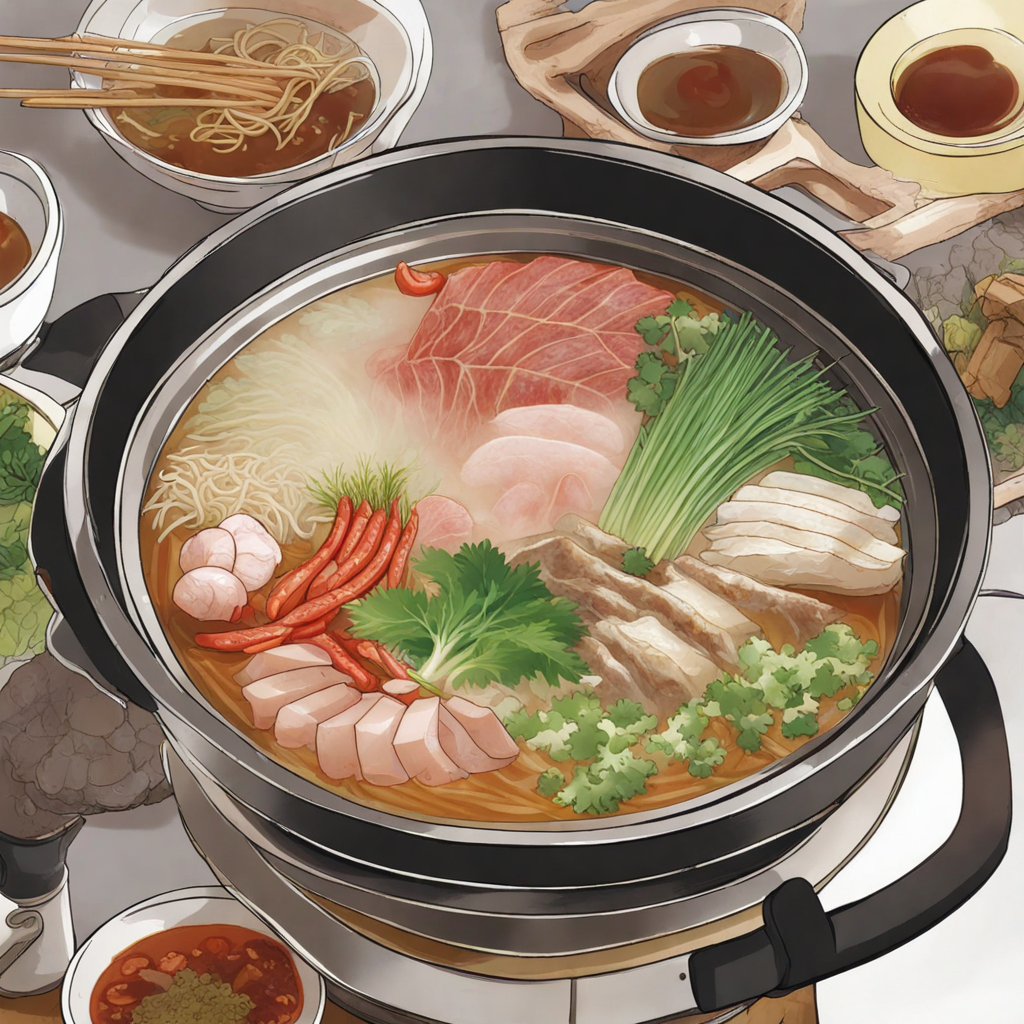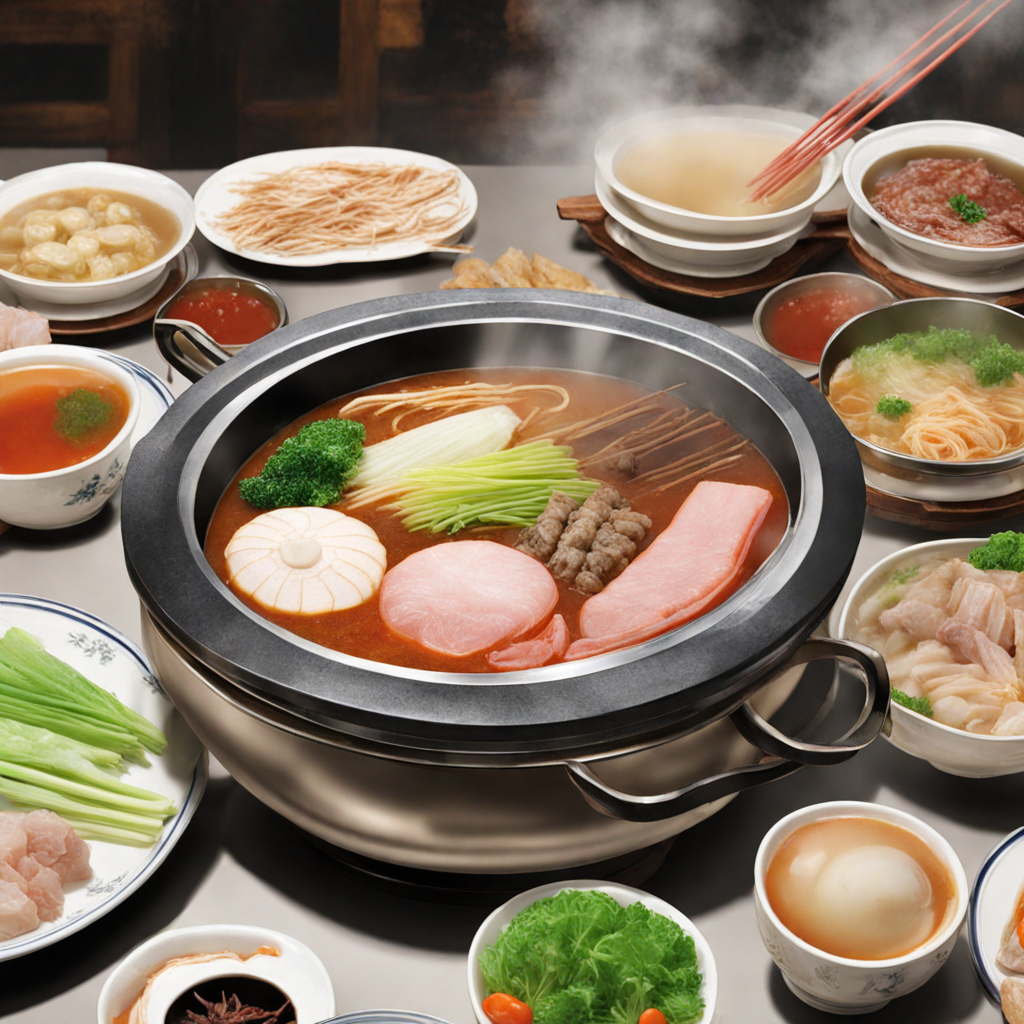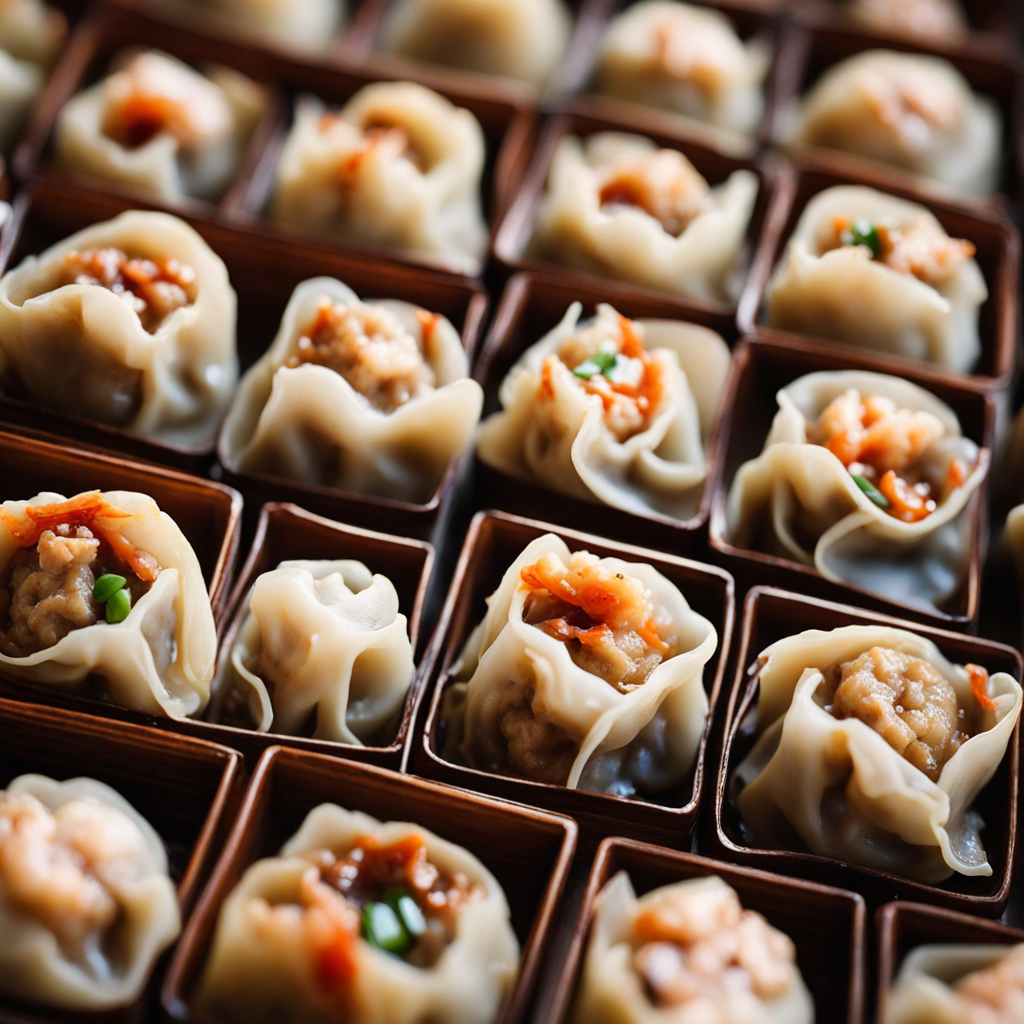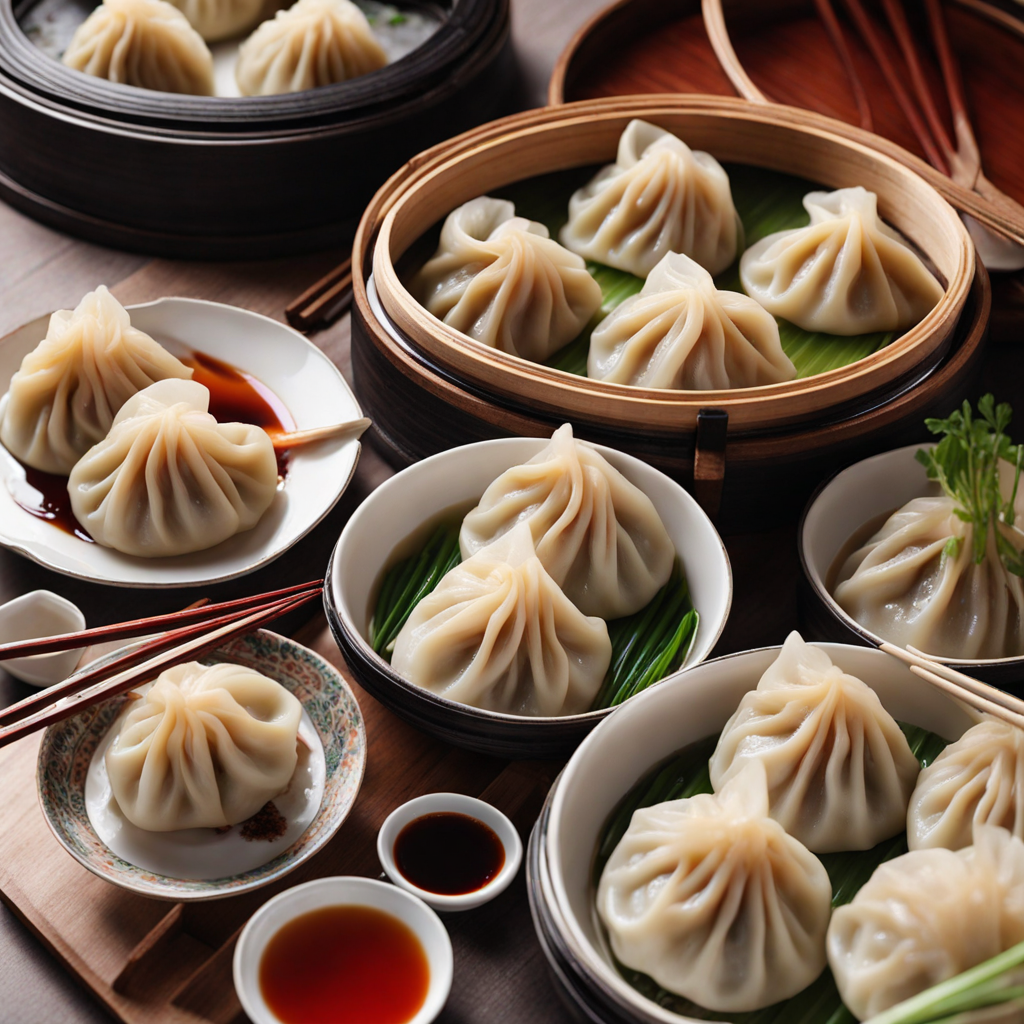Hot Pot
Hot Pot, a beloved culinary tradition from China, offers a unique and interactive dining experience that centers around a communal pot of simmering broth. This broth can vary in flavor, from mild and fragrant to spicy and bold, often infused with a variety of herbs, spices, and aromatics. Diners gather around the pot, where they can select from an array of fresh ingredients such as thinly sliced meats, seafood, vegetables, and noodles, all of which are meant to be cooked in the bubbling broth right at the table. The process of cooking together fosters a sense of togetherness and enjoyment, making every meal a social event. As the ingredients cook in the hot broth, they release their flavors, enriching the liquid and creating a dynamic taste experience. Each bite is a delightful blend of textures and tastes, as you dip cooked morsels into a variety of dipping sauces that complement the hot pot's flavor profile. These sauces can be customized with ingredients like sesame paste, soy sauce, garlic, and chili oil, allowing each diner to tailor their meal to their preferences. The excitement lies not only in the cooking but also in the exploration of flavors as you discover new combinations with each dip and bite. Whether you prefer a spicy Sichuan version that brings the heat or a milder broth that highlights the freshness of the ingredients, Hot Pot caters to all palates. The communal aspect of the meal, along with the rich and varied flavors, makes Hot Pot a must-try culinary adventure for anyone looking to step outside their usual dining experiences. It’s a celebration of food, friendship, and cultural heritage, offering an unforgettable journey into the heart of Chinese cuisine.
How It Became This Dish
The History of Hot Pot (火锅): A Culinary Tradition from China Hot pot, known in Mandarin as 火锅 (huǒguō), is a beloved culinary tradition that has captivated taste buds and warmed hearts for centuries in China and beyond. This communal dining experience not only showcases the rich tapestry of Chinese cuisine but also reflects the cultural significance of sharing food and fostering connections between people. Its origins, evolution, and cultural importance form a fascinating narrative that encapsulates the essence of Chinese hospitality and family values. #### Origins: A Culinary Birth in Ancient Times The roots of hot pot can be traced back over a thousand years, with its earliest mentions appearing during the Tang Dynasty (618–907 AD). It is believed that the concept of cooking food in a simmering pot of broth emerged from the nomadic tribes of northern China, particularly the Mongols. Historical accounts suggest that these tribes would boil meat in a pot over an open fire, thereby creating a primitive form of what we now recognize as hot pot. The earliest versions of hot pot were relatively simple, consisting primarily of meat and broth. As the dish evolved, it began incorporating various ingredients such as vegetables, tofu, and noodles, allowing for a more diverse and flavorful experience. The Song Dynasty (960–1279 AD) saw an increase in the popularity of hot pot, particularly among the elite classes, who relished the opportunity to enjoy this communal meal with family and friends. #### Cultural Significance: More Than Just a Meal Hot pot transcends mere sustenance; it embodies the values of family, friendship, and community. The act of gathering around a bubbling pot of broth, sharing in the preparation and cooking of ingredients, transforms dining into an interactive experience. This communal aspect has deep cultural roots in Chinese society, where meals are often seen as opportunities for bonding and strengthening relationships. In many regions of China, hot pot is a staple during festive occasions and family gatherings, symbolizing unity and harmony. The preparation process, where diners select their ingredients and cook them to their liking, fosters a sense of togetherness. It encourages conversation and connection, as participants share not only the meal but also stories, laughter, and camaraderie. Hot pot also encompasses regional variations that reflect local ingredients and culinary preferences. For example, the spicy Sichuan hot pot is known for its bold, peppery flavor and numbing spices, while the Cantonese style emphasizes a lighter broth made from seafood and herbs. These variations highlight the diversity of Chinese cuisine and the adaptability of hot pot to different cultural contexts. #### Development Over Time: From Tradition to Global Phenomenon As China entered the Ming (1368–1644) and Qing (1644–1912) Dynasties, hot pot continued to gain popularity, particularly in the southern regions. It was during this period that the dish began to evolve into the various styles we see today. Different provinces began to develop their unique takes on hot pot, each with distinctive broths, dipping sauces, and cooking methods. In the 20th century, hot pot experienced a significant transformation, especially with the rise of urbanization and modernization. The post-1949 era saw the establishment of hot pot restaurants in major cities, where the dish became accessible to a broader audience. The introduction of pre-packaged ingredients and ready-to-cook broths revolutionized the hot pot experience, making it easier for families to enjoy this culinary tradition at home. The late 20th century marked a turning point for hot pot as it began to gain international recognition. The 1980s and 1990s saw a wave of Chinese immigration to various countries, bringing with them their culinary traditions, including hot pot. This led to the establishment of hot pot restaurants in cities around the world, from San Francisco to Sydney. The dish underwent further adaptations to cater to local tastes, resulting in a fusion of flavors and ingredients that appealed to diverse palates. In recent years, hot pot has surged in popularity, driven by social media and the rise of food culture. The vibrant colors, steaming pots, and unique dining experience have made it a favorite subject for food bloggers and influencers. The trend of all-you-can-eat hot pot restaurants has also proliferated, allowing diners to indulge in an endless array of ingredients, from premium cuts of meat to exotic seafood. #### Modern Hot Pot: A Culinary Canvas Today, hot pot is more than just a meal; it is a cultural phenomenon that continues to evolve. Modern hot pot establishments range from traditional to ultra-modern, featuring high-tech cooking equipment, personalized broths tailored to individual preferences, and a plethora of unique dipping sauces. Some restaurants even offer specialty broths infused with superfoods, catering to health-conscious consumers. Moreover, the COVID-19 pandemic brought about new challenges and innovations in the hot pot industry. Many restaurants adapted their menus to offer take-out options and DIY hot pot kits, allowing customers to recreate the experience at home. This adaptability showcases the resilience of the hot pot tradition and its ability to thrive in changing circumstances. In addition to its commercial success, hot pot has also found a place in popular culture. It is frequently featured in films, television shows, and social media, often depicted as a symbol of warmth and togetherness. The dish’s communal nature resonates with the contemporary emphasis on shared experiences, making it a perfect choice for gatherings, celebrations, and casual dining. #### Conclusion: A Timeless Tradition The history of hot pot is a rich tapestry woven with threads of tradition, culture, and community. From its humble beginnings among nomadic tribes to its status as a global culinary sensation, hot pot has adapted and flourished through the ages. It remains a cherished dining experience that brings people together, fostering connections and creating lasting memories. As we continue to embrace the diversity of culinary experiences in our increasingly globalized world, hot pot stands out as a testament to the enduring power of food to unite us. Whether enjoyed in a bustling restaurant or around a family table, hot pot is more than just a meal; it is a celebration of life, love, and the joy of sharing.
You may like
Discover local flavors from China







